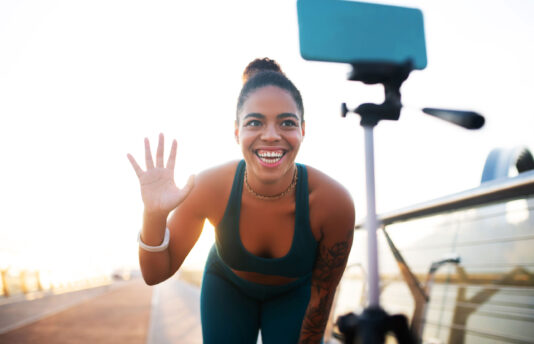Here’s what we know about social media as it stands today: It’s going to change tomorrow.
Think about this: When TikTok was launched in the U.S. in 2018 (after merging with Musical.ly), it was initially intended to be a platform for short entertainment clips—dancing, singing, stupid pet tricks—meant for a younger audience that expresses itself through mobile technology directly to social media.
Now, the platform has more than 800 million users and competes with YouTube, Instagram and Facebook in the video space. It’s no longer just for teens to watch music videos. TikTok is a space where influencers thrive and people of all ages flock.
It reinforces what we have seen since Mark Zuckerberg and his college friends basically invented social media in 2004—people will find news and different ways to entertain and communicate with each other.
Here are four ways to build your community in ways you might not have originally thought were the right fit for your business or brand.
1. You don’t need to appeal to teens to rock on TikTok.
While there was some concern that TikTok would stay a teen fad, many adults are using the platform. Advanced targeting tactics can help you find the sweet spot of the right audience engaging with you authentically.
Here’s how: Find out what kinds of content your target audience is engaging with on TikTok and adapt to the genre. For example, older audiences engage with how-to cooking content. Poll your audience or dive into the app yourself to see how like-minded people are spending their time.
2. Just when you found one influencer, you need to find another? Yes!
Multiple influencers for one campaign is becoming the norm, but that means more time spent finding ones who will fit both your brand and campaign message. Who has time for that?
You do.
The development of new influencer matching platforms, powered by artificial intelligence (AI), will help you match with an influencer who checks all of your boxes. This kind of automation will be a huge time-saver, and hopefully, a boon for brands who have a hard time finding influencers that fit them.
The technology can also analyze the influencer’s following and then cross-check who they are following, allowing you to discover “lookalike” influencers, quickly and easily building your influencer army for each campaign.
Here’s how: Before choosing a service that uses AI to build out your influencer network, spend some time identifying your “one”—the influencer that embodies your brand and whose audience encapsulates your consumer. Once you find them, build your strategy around them before expanding the network outward. A strong foundation and a solid plan are vital to activating a web of influencers, so make sure you’re ready.
3. Rethinking experiential marketing (and the role gaming and augmented reality will play).
When Star Wars, the new Christoper Nolan film “Tenet” and Travis Scott all hosted exclusive events in Fortnite, they saw considerable boosts to interest and engagement, not to mention social conversations that last long after the event is over. Increasingly, virtual channels are becoming “spaces,” valid locations to host a live event, from world-premiere entertainment to your local high school graduation.
Here’s how: Figure out what “space” your audience is likely to inhabit. Are they on the younger side and might be more inclined to be into gaming? Are they older and mostly discover these types of experiences through word-of-mouth or Facebook? The adage “meet your customer where they are” applies to 3D virtual spaces as well.
So, before you spend time and money building an awesome experience, make sure it’s on a platform accessible to those you care about most. An experience doesn’t have to mean a full VR headset, goggles and all, either. Memorable experiences can just as comfortably live in the front-facing camera on your customer’s phone.
4. Livestreaming is the new “event.”
As people look to connect online with their favorite brands and creators in real time, livestreaming has been on the rise for years. Livestreaming is more relevant than ever as platforms continue to enhance their user experiences.
- Facebook now lets you set up an Event page and ticketing for your upcoming Live event, allowing for things like paid webinars to run smoothly completely via Facebook.
- Twitch now allows you to build out a weekly schedule on your page so that interested viewers can receive notifications when you plan to go live. Building a consistent schedule and encouraging your prospective audience to check back regularly for updates can help build anticipation.
The trick is figuring out where your event (and, more importantly, your brand) fits in the world of streaming. A lifestyle how-to, such as a makeup tutorial or a cooking demonstration, may be more suited to a Facebook Live than a Twitch stream, while a more serious discussion of investment planning may be best suited to a private, RSVP-only service like GoToWebinar.
Here’s how: Once you’ve picked a platform, you’ve got to build hype—promote a countdown, highlight limited space (if that’s a factor), tease the questions you’ll be answering. And once the event is over, don’t forget to slice and dice—most streaming platforms record livestreams by default now, so it’s easy to download and turn into shorter content for your social and email campaigns.











